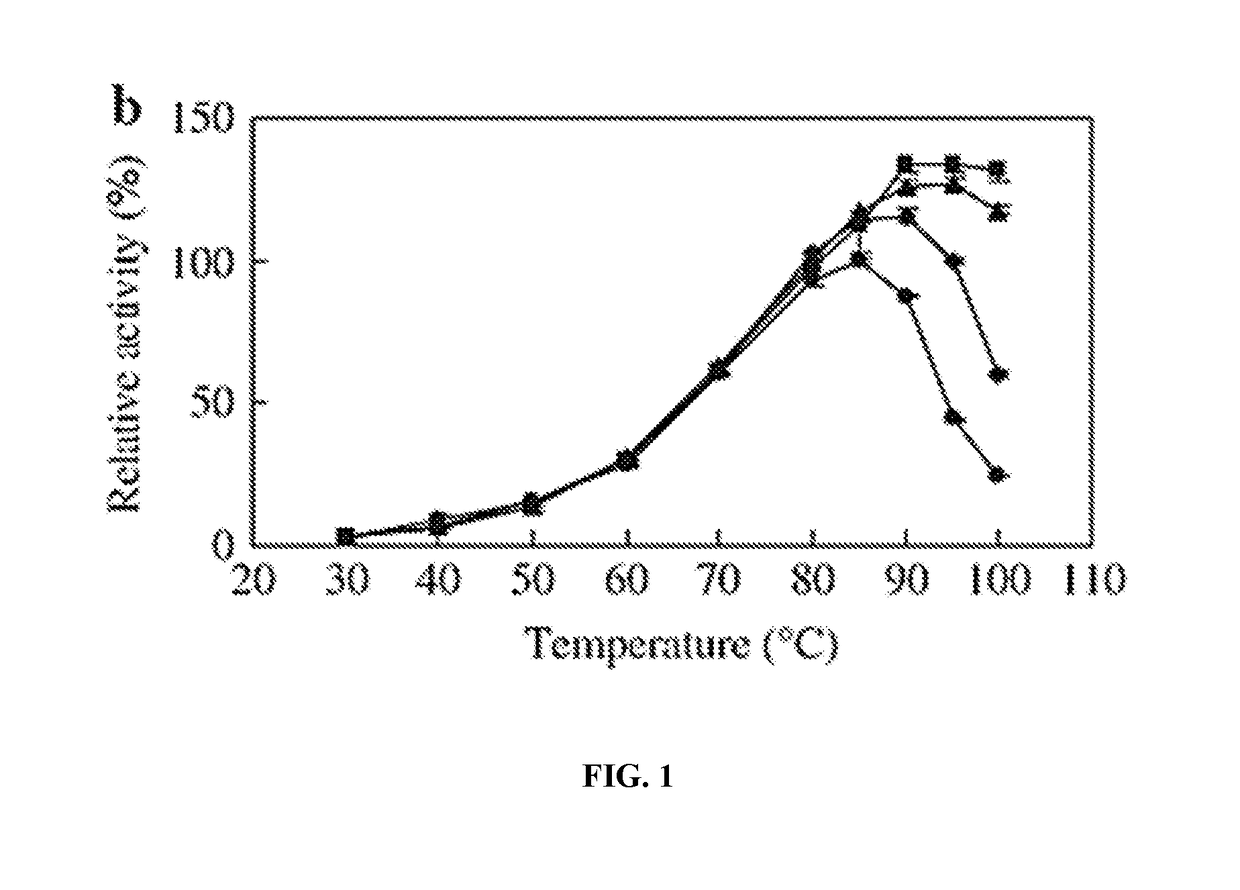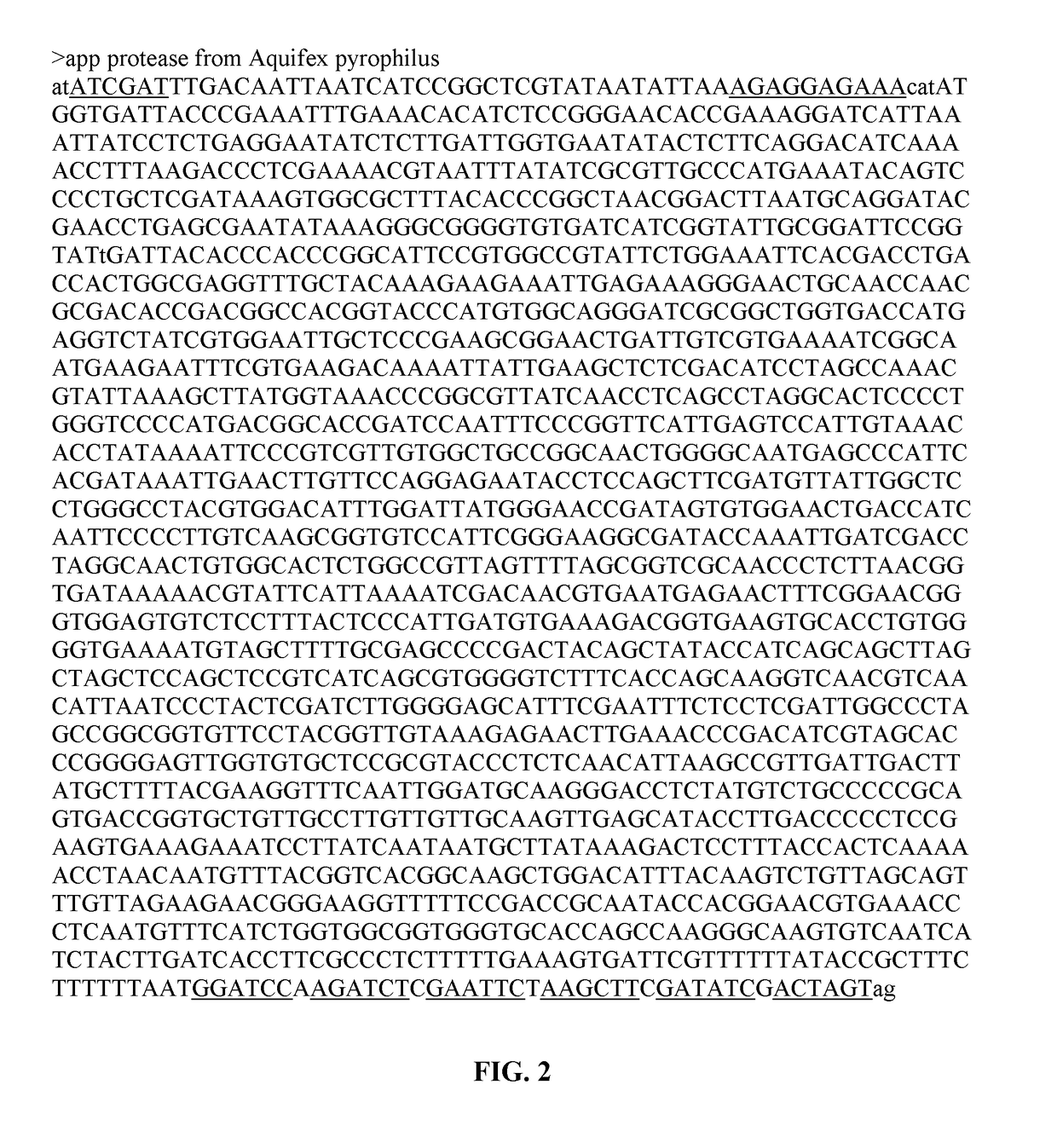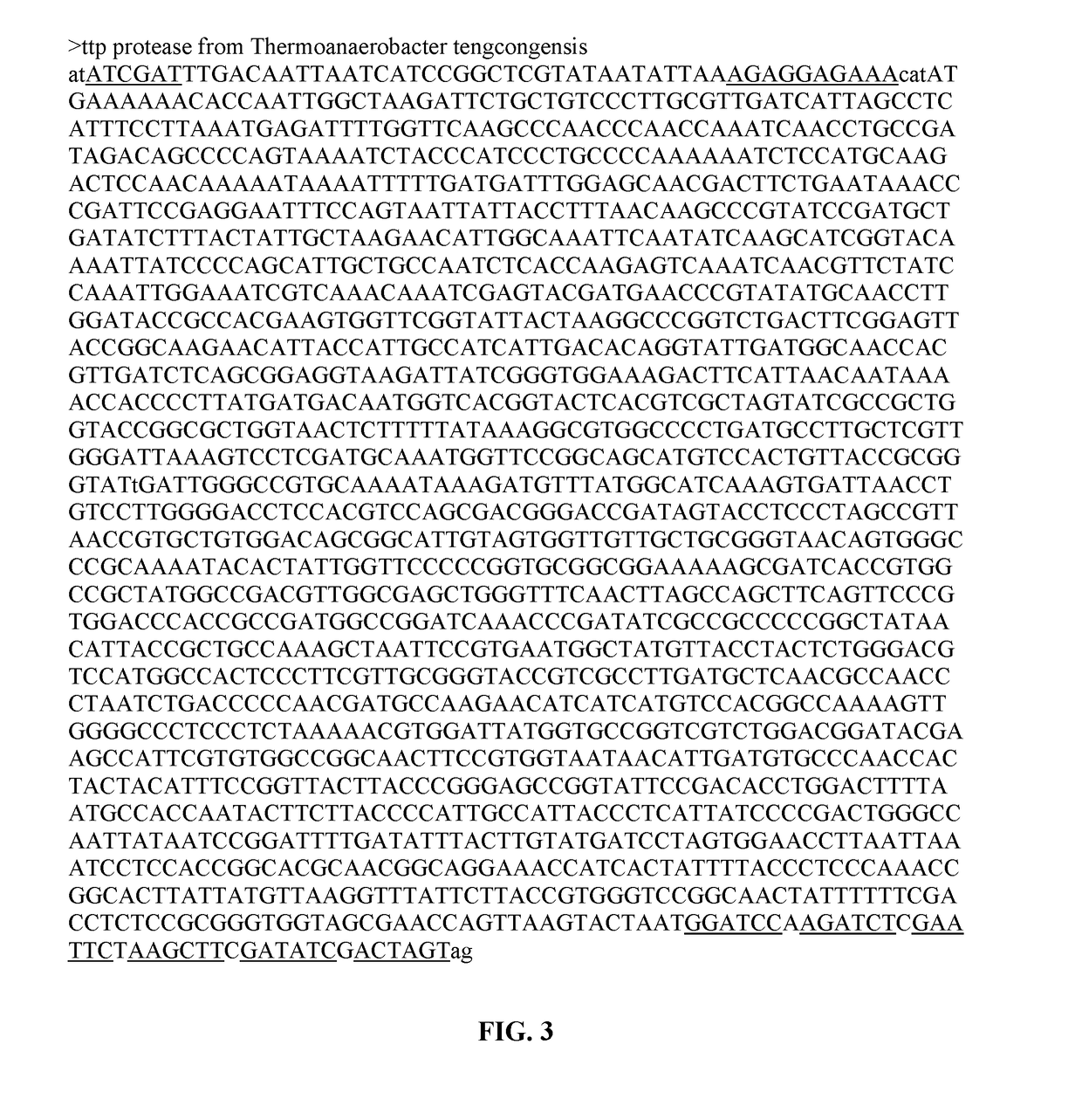Methods and compositions for high-efficiency production of biofuel and/or biomass
a biofuel and/or biomass technology, applied in the field of methods and intracellular biological products, can solve the problems of high cost of enzymes, and often required cell disruption
- Summary
- Abstract
- Description
- Claims
- Application Information
AI Technical Summary
Benefits of technology
Problems solved by technology
Method used
Image
Examples
example 1
d Synthesis of Thermostable Protease Genes
[0195]The highly expressed genes in the Synechocystis PCC6830 and Synechococcus PCC7002 were analyzed, and a codon usage bias table for host cyanobacteria was built (Table 3).
TABLE 3Synechococcus sp. PCC 7002 and Synechocystis PCC6803 highly expressed gene codon biasfields: [triplet] [amino acid] [fraction] [frequency: per thousand]UUUF0.6730.2UCUS0.1810.1UAUY0.5617.6UGUC0.607.2UUCF0.3315.0UCCS0.2011.2UACY0.4413.8UGCC0.404.7UUAL0.1617.5UCAS0.074.0UAA*0.561.9UGA*0.150.5UUGL0.1921.2UCGS0.137.0UAG*0.280.9UGGW1.0014.6CUUL0.1011.5CCUP0.167.7CAUH0.479.4CGUR0.2110.4CUCL0.2730.2CCCP0.4723.3CACH0.5310.6CGCR0.3517.4CUAL0.099.6CCAP0.157.3CAAQ0.5929.5CGAR0.104.8CUGL0.1921.6CCGP0.2211.0CAGQ0.4120.5CGGR0.2813.8AUUI0.5635.9ACUT0.158.5AAUN0.6121.1AGUS0.2111.8AUCI0.4226.9ACCT0.4827.7AACN0.3913.6AGCS0.2011.1AUAI0.021.2ACAT0.158.5AAAK0.6627.4AGAR0.052.3AUGM1.0022.9ACGT0.2212.4AAGK0.3414.0AGGR0.031.4GUUV0.2416.5GCUA0.1815.9GAUD0.6931.9GGUG0.3022.0GUCV0.2718.9GC...
example 2
ion of DNA Fragments and Transformation for Cyanobacteria
[0197]Linear DNA fragments were constructed by splicing overlapping DNA sequences via Gibson Assembly and PCR (See, for example, Gibson, et al., Nature Methods, 343-345, 2009). Taking the transformation of Synechococcus 7002 as an example, four overlapping pieces were amplified from the genomic DNA or synthesized template by PCR: Piece 1 [left flanking region], Piece 2 [Ptrc+Gene of Interest], Piece 3 [multi-cloning site+KmR], and Piece 4 [right flanking region]. The primers used for PCR are listed in Table 4.
[0198]The transformation of Synechocystis PCC6803 was similar to the protocol, the main difference was that Synechocystis PCC6803 was a freshwater cyanobacterium, and culture medium for Synechocystis PCC6803 was fresh water BG-11 (ATCC® Medium 616).
TABLE 4Primers used for Synechococcus 7002 transformationSEQIDNameSequence (5′ to 3′)NO.:Note0053S71F1SAGC GAT GCG AAT ATT CAT GCC 3Amplifying [left GAC TAA Cflanking region]00...
example 8
Incorporated SAB406 (Ttp) and SAB407 (Tap) Self-Destruction at Elevated Temperatures
[0229]50 μl of cultures (OD730 nm˜0.7) of the SAB407 (ΔfadD::Ptrc tap KmR), SAB406 (ΔfadD::Ptrc ttp KmR), and wild type cells were incubated on a temperature gradient of 50° C., 47° C., 45° C., 41° C., 37° C., 35° C. and 32° C. for 24 hours. The cell viability was checked by SYTOX Green staining and fluorescence microscopy. As shown in Table 9, the mutant strains SAB406 and SAB407 showed higher death rate than the wild type, when incubated at elevated temperatures for one day. This result suggested that the thermostable proteases became active and destructed the cells at elevated temperatures.
TABLE 9Temperature-induced lysis percentage of Syenchococcuscells at elevated temperaturesTemperatureSAB406(° C.)Wild type(ttp)SAB407 (tap)5050%100%100%4745%100%90%4512%35%25%413%10%8%372%9%4%342%5%3%321%2%1%
Example 9—SAB406 (Ttp) and SAB407 (Tap) Cell Lysates Supporting the Growth of E. coli
[0230]Thermostable ...
PUM
| Property | Measurement | Unit |
|---|---|---|
| temperature | aaaaa | aaaaa |
| temperature | aaaaa | aaaaa |
| temperature | aaaaa | aaaaa |
Abstract
Description
Claims
Application Information
 Login to View More
Login to View More - Generate Ideas
- Intellectual Property
- Life Sciences
- Materials
- Tech Scout
- Unparalleled Data Quality
- Higher Quality Content
- 60% Fewer Hallucinations
Browse by: Latest US Patents, China's latest patents, Technical Efficacy Thesaurus, Application Domain, Technology Topic, Popular Technical Reports.
© 2025 PatSnap. All rights reserved.Legal|Privacy policy|Modern Slavery Act Transparency Statement|Sitemap|About US| Contact US: help@patsnap.com



